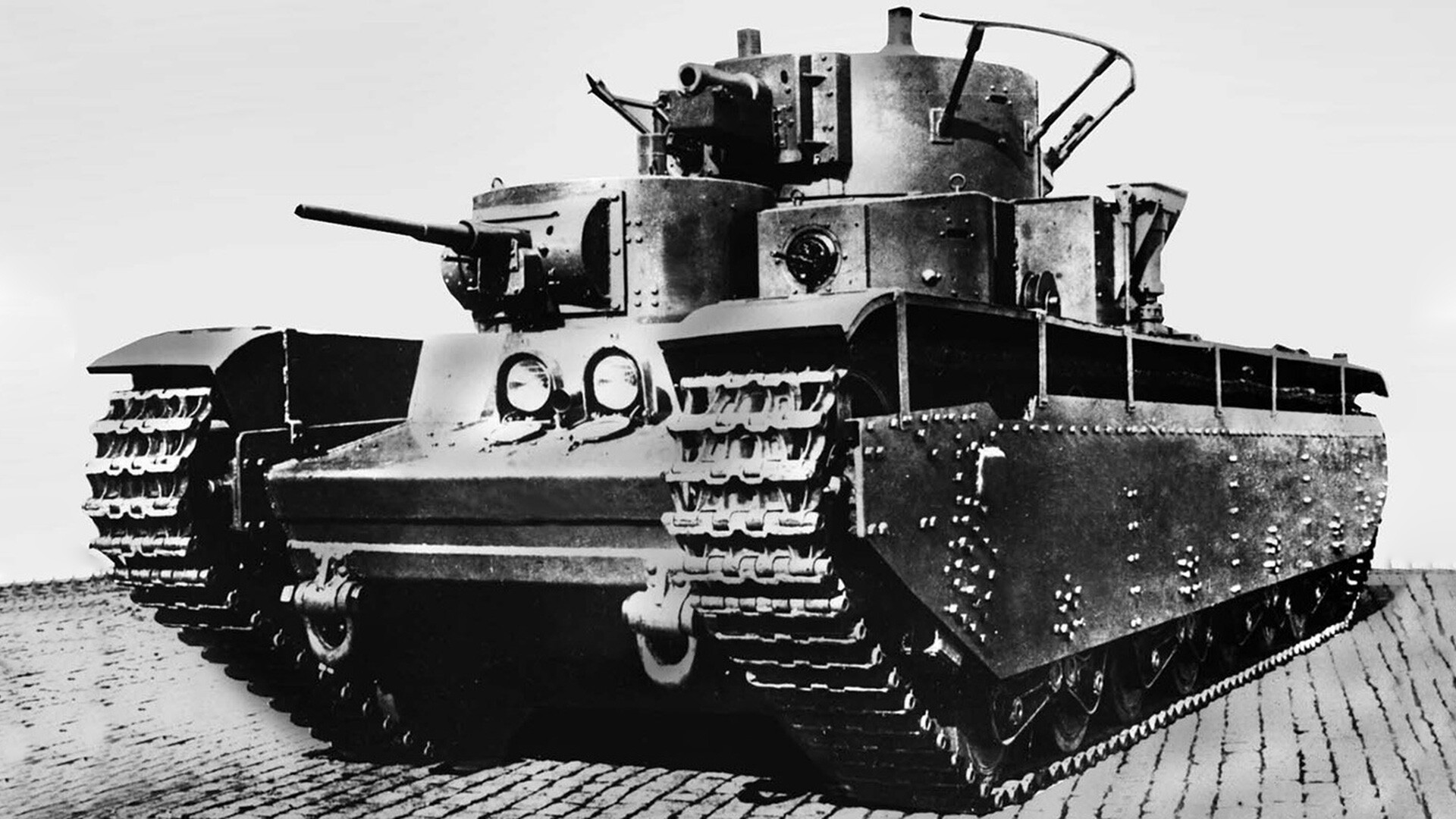
During the period between the two world wars, many countries were keen on developing heavy multi-turret tanks. Each of these powerful "land battleships" was supposed to dominate the battlefield, replacing a platoon of light tanks.
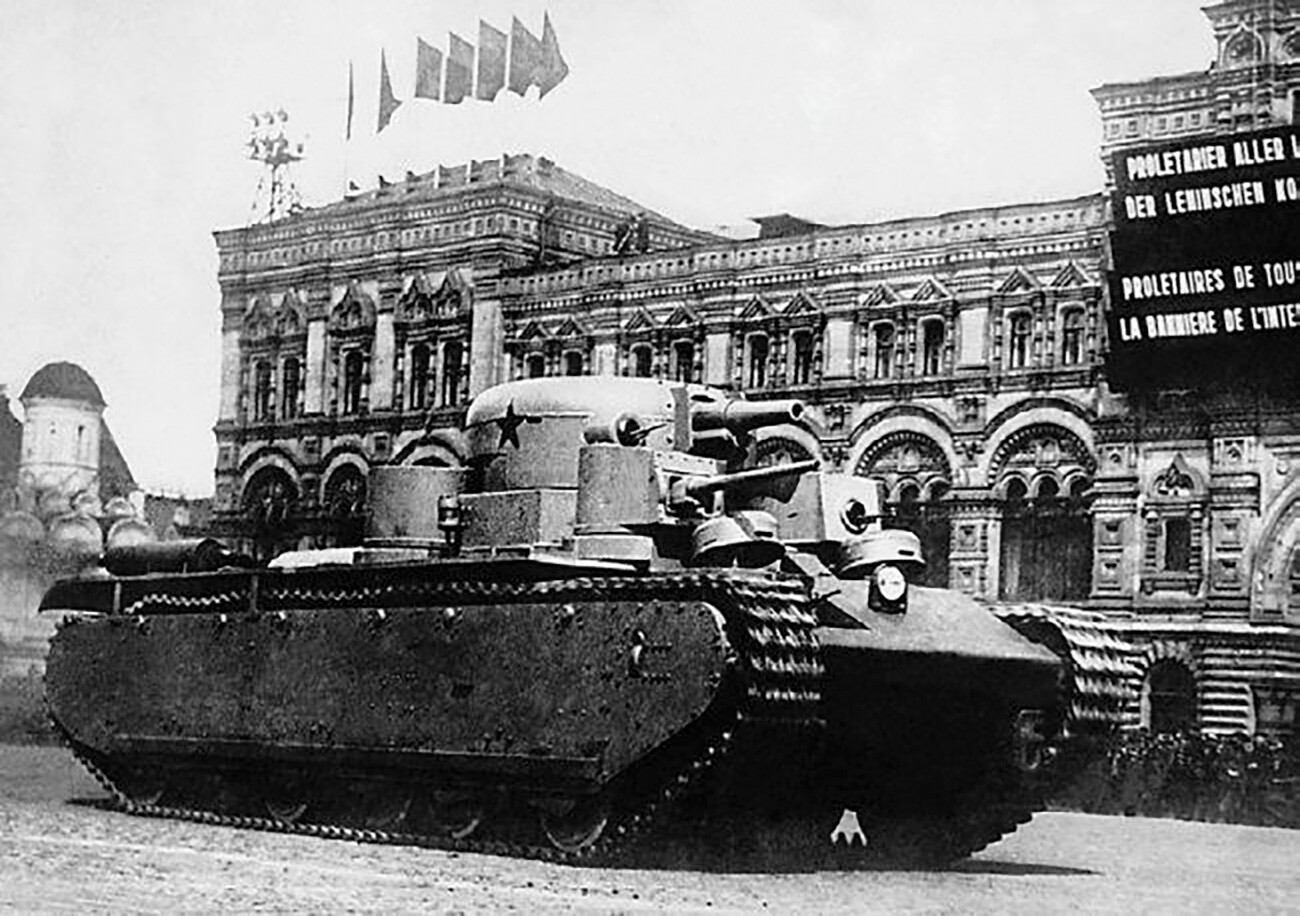
Two-turret and three-turret models appeared and Great Britain and the USSR even managed to create combat vehicles with five turrets. However, if with the British Vickers A1E1 ‘Independent’ did not go beyond a prototype, the Soviet T-35 was put into mass production.
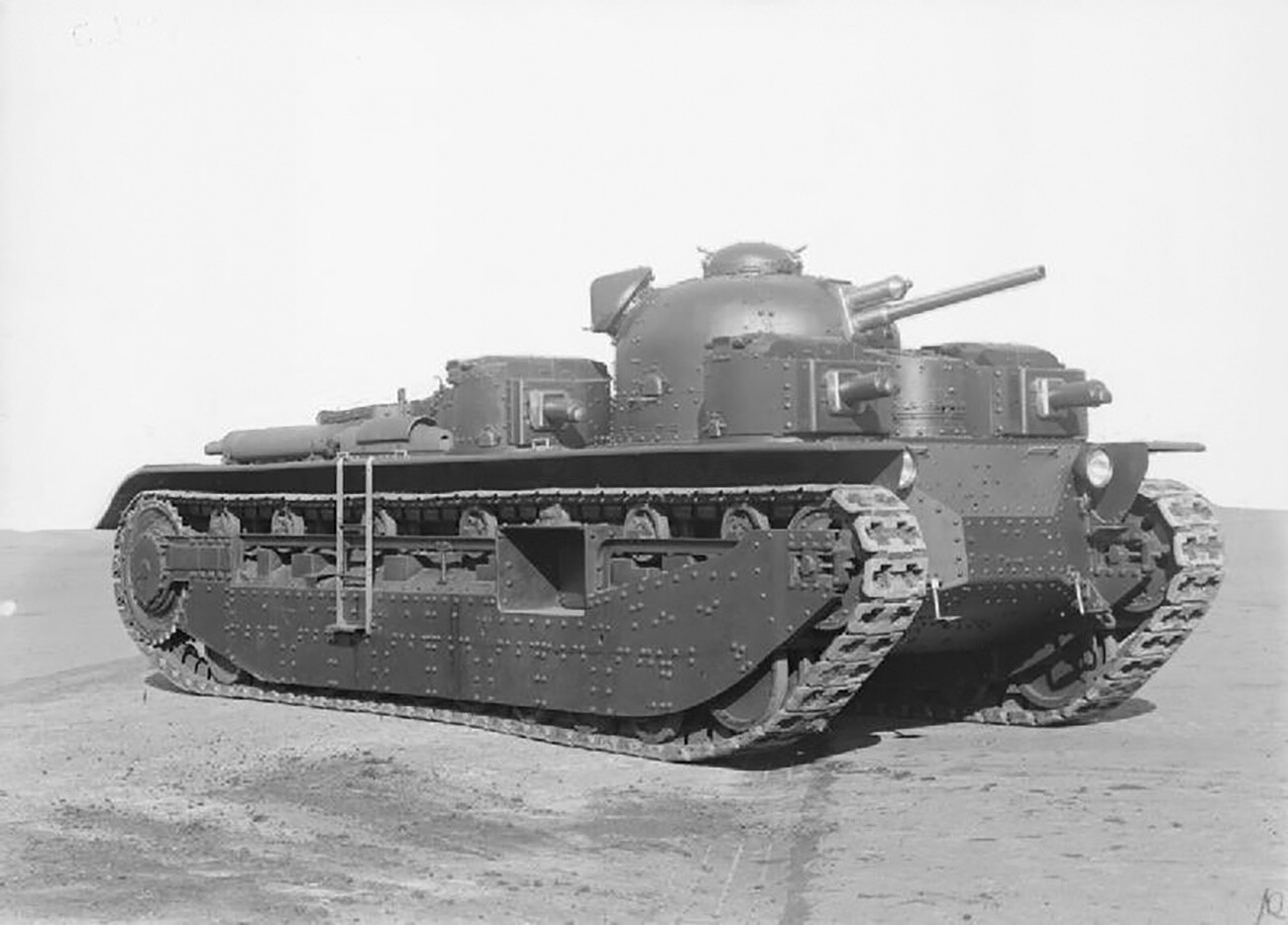
Vickers 'Independent' Heavy Tank (A1E1).
Public DomainCreated in 1932, the tank turned out to be a real giant - its length was 9.7 meters and its weight was 50-55 tons (depending on the modification). The hull armor thickness averaged 20 mm, the turrets - 25-30 mm. It could protect the vehicle from bullets, shrapnel and small-caliber artillery shells.
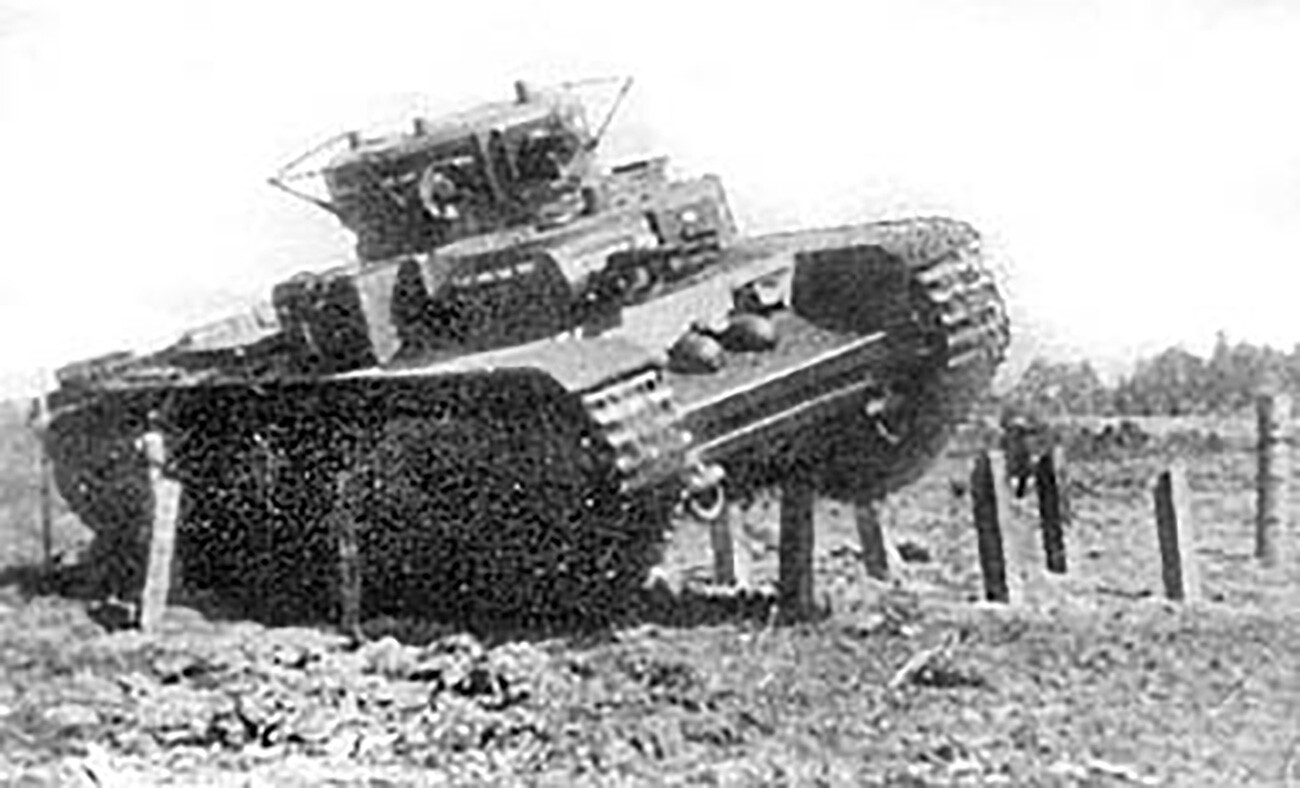
It was assumed that the tank would break through enemy defenses, creating a real sea of fire around itself. It had one 76.2-mm and two 45-mm guns, as well as six 7.62-mm machine guns (one of the modifications was equipped with an additional machine gun for firing at aerial targets).

Depending on the series, the crew of the combat vehicle varied from 9 to 11 men. The commander was positioned in the main turret and also served as gunner. Along with him there was a radio operator, who acted as a loader in combat.
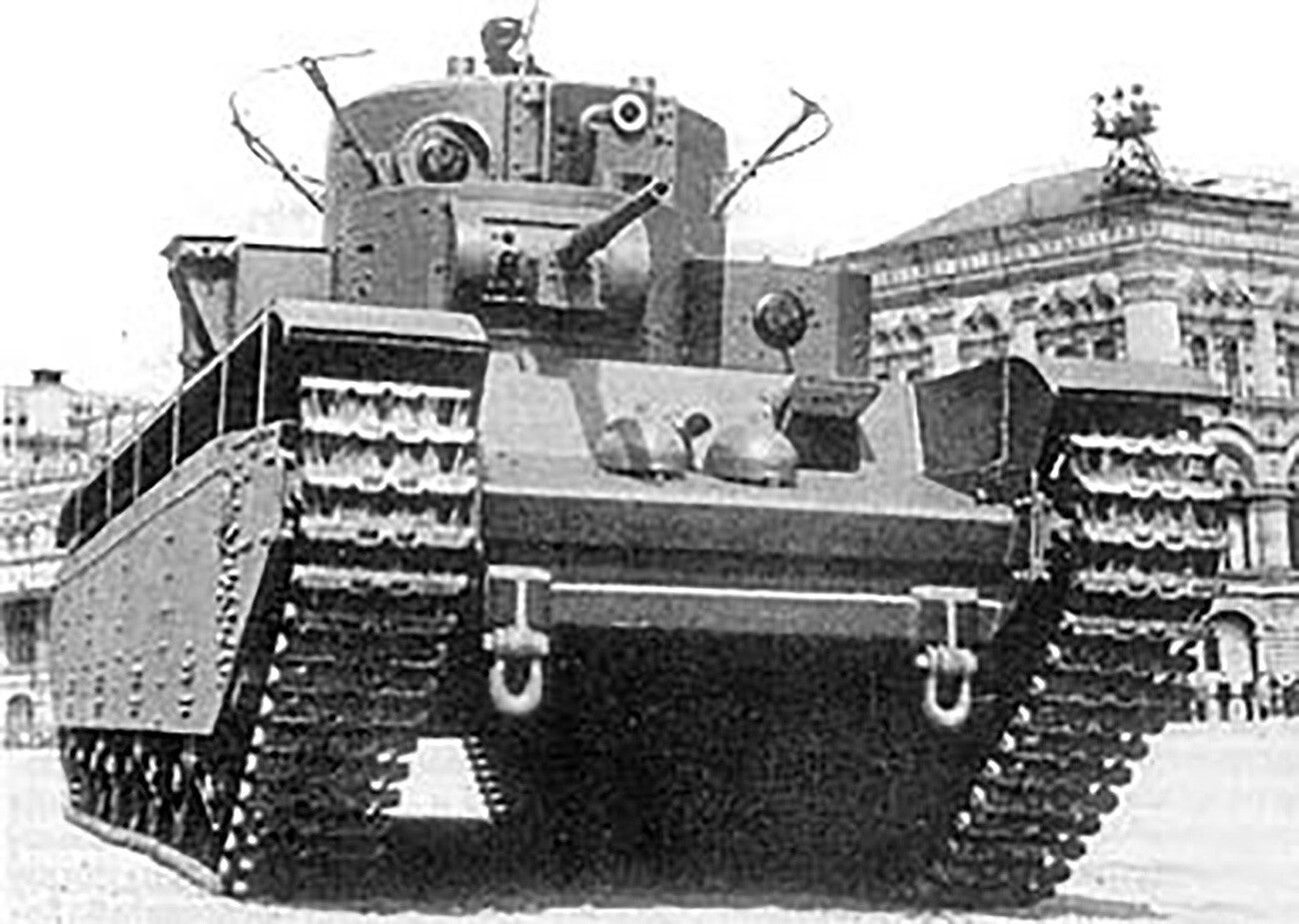
Thanks to its menacing appearance, the T-35 was an invariable participant of military parades. It was also depicted on the‘For Courage’ medal.
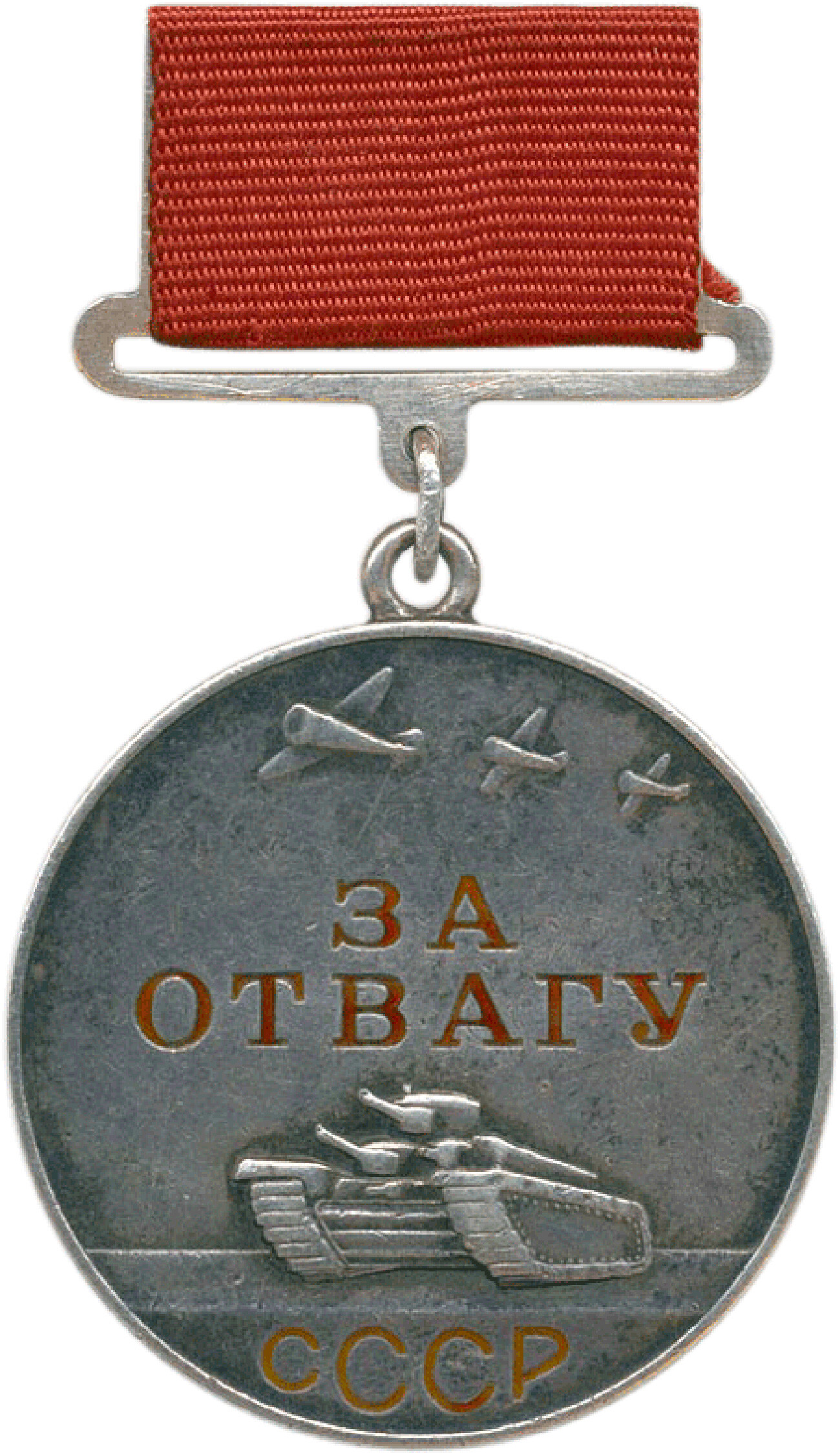
‘For Courage’ medal.
Public DomainMeanwhile, in addition to weak armor, the tank had other disadvantages: poor visibility, clumsiness and slowness. With a declared maximum speed of 30 km/h, the 50-ton combat vehicle moved at a speed of only 8-10 km/h. All this made it an excellent target for enemy fire.
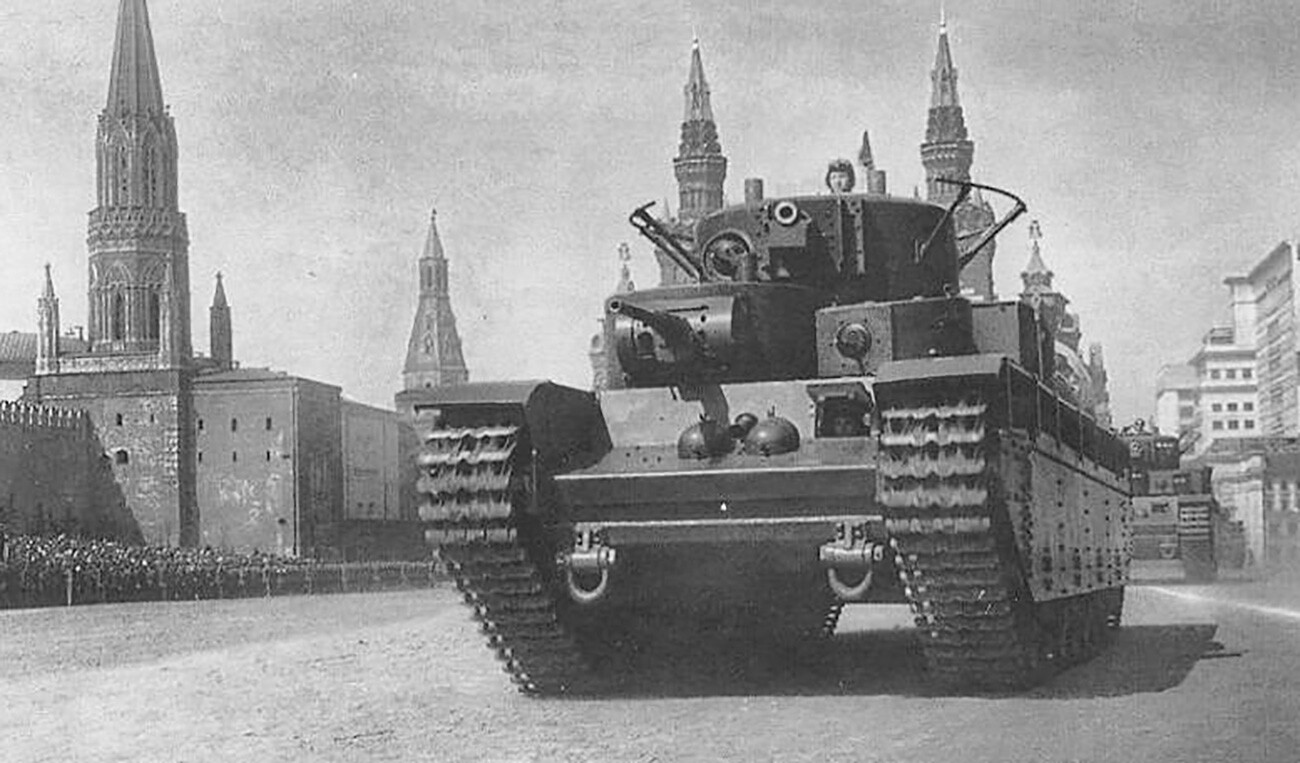
"This T-35 was not sugar,” recalled mechanic-driver Ivan Smolyakov. “It was a very heavy and complex vehicle... They broke down often, especially the transmission was a problem. We changed two gearboxes in my vehiclein just six months. And we didn't do big marches, we tried to take care of our tanks.”
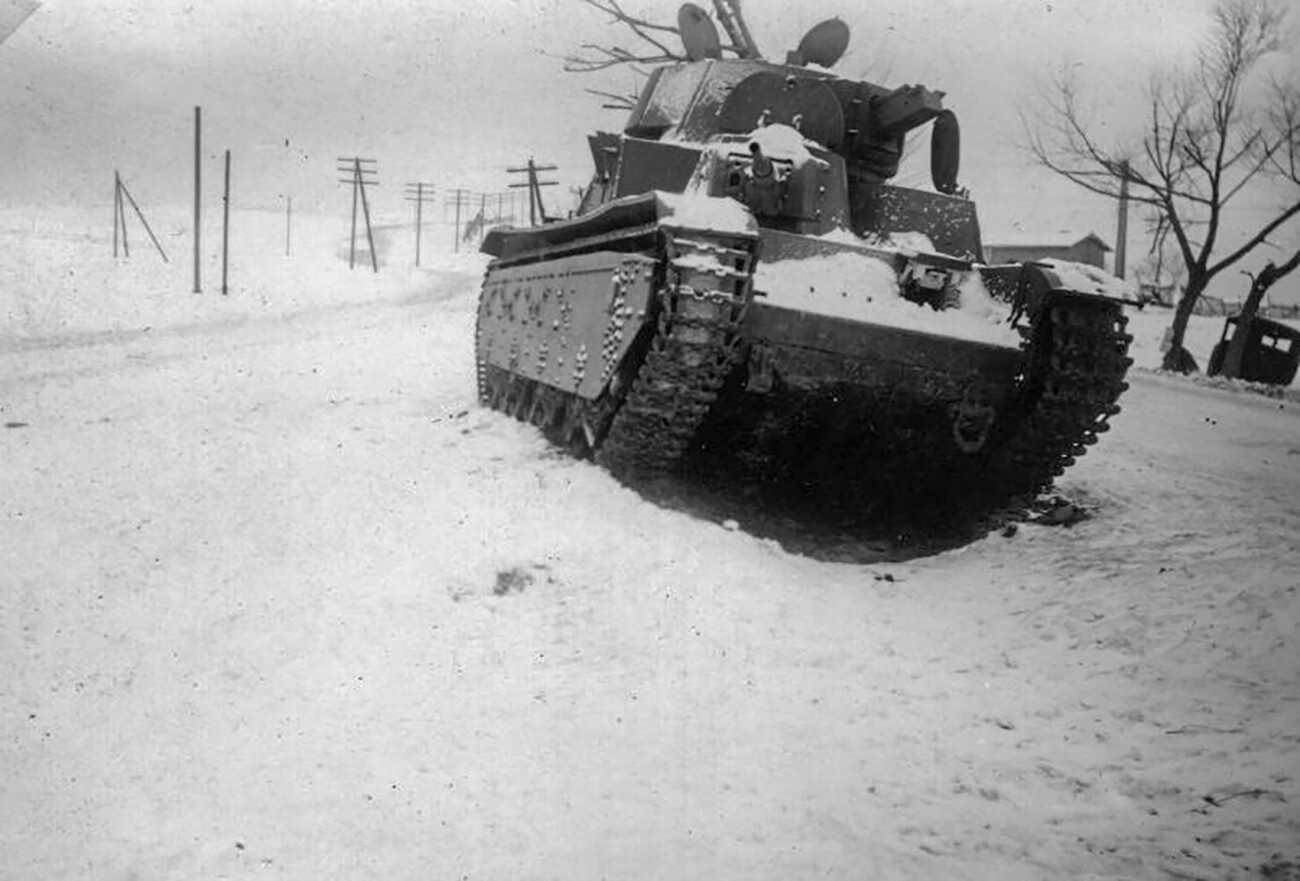
By the early 1940s, the tank had already become obsolete. However, it was decided to "keep it in service until it was completely worn out". When the Wehrmacht invaded the Soviet Union on June 22, 1941, the Red Army had about 60 T-35s, 48 of which were in the 34th Tank Division of the Southwestern Front in Ukraine.
During the first two weeks of the war, they were all lost - partly destroyed by the enemy, but mostly because they broke downduring marches and were abandoned by the crews. Some units in the rear were used as firing points in the defense of Kharkov.
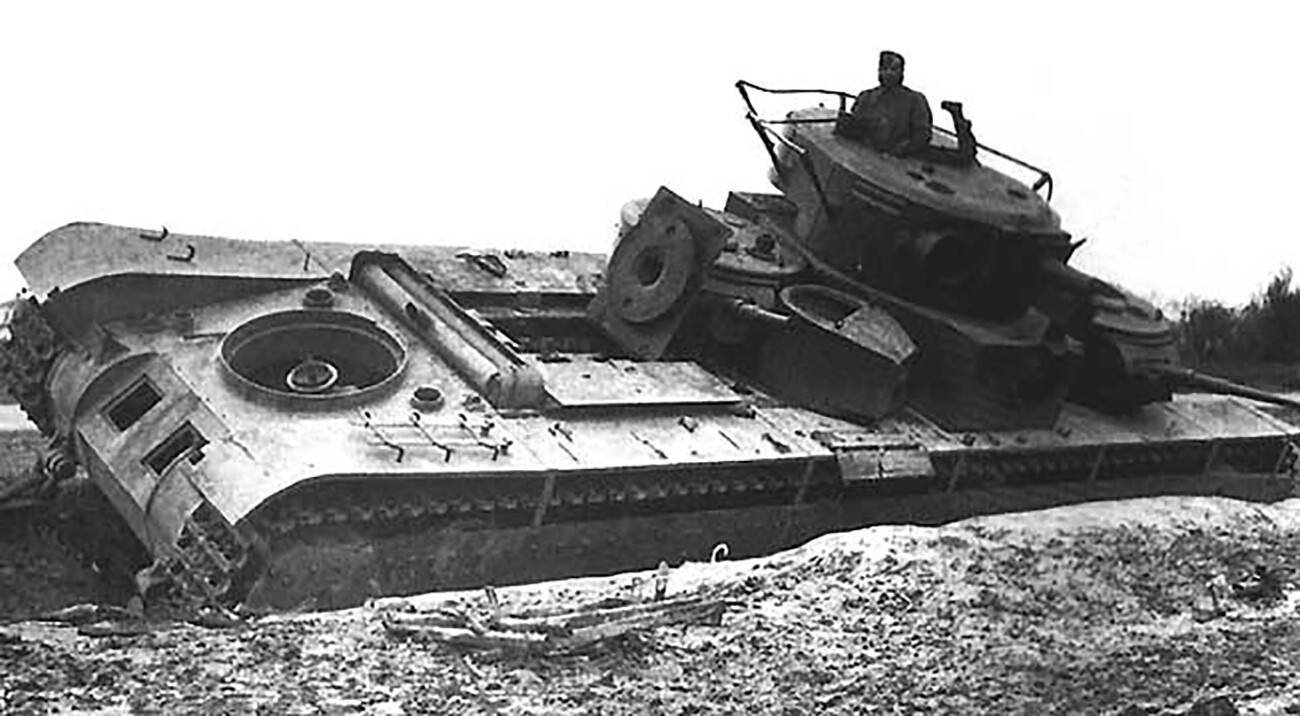
German soldiers really enjoyed being photographed against the backdrop of the defeated Soviet giants. One captured T-35 was sent for testing at the Kummersdorf tank training ground. According to some reports, in 1945, it took part in the Battle of Berlin on the side of the Nazis.
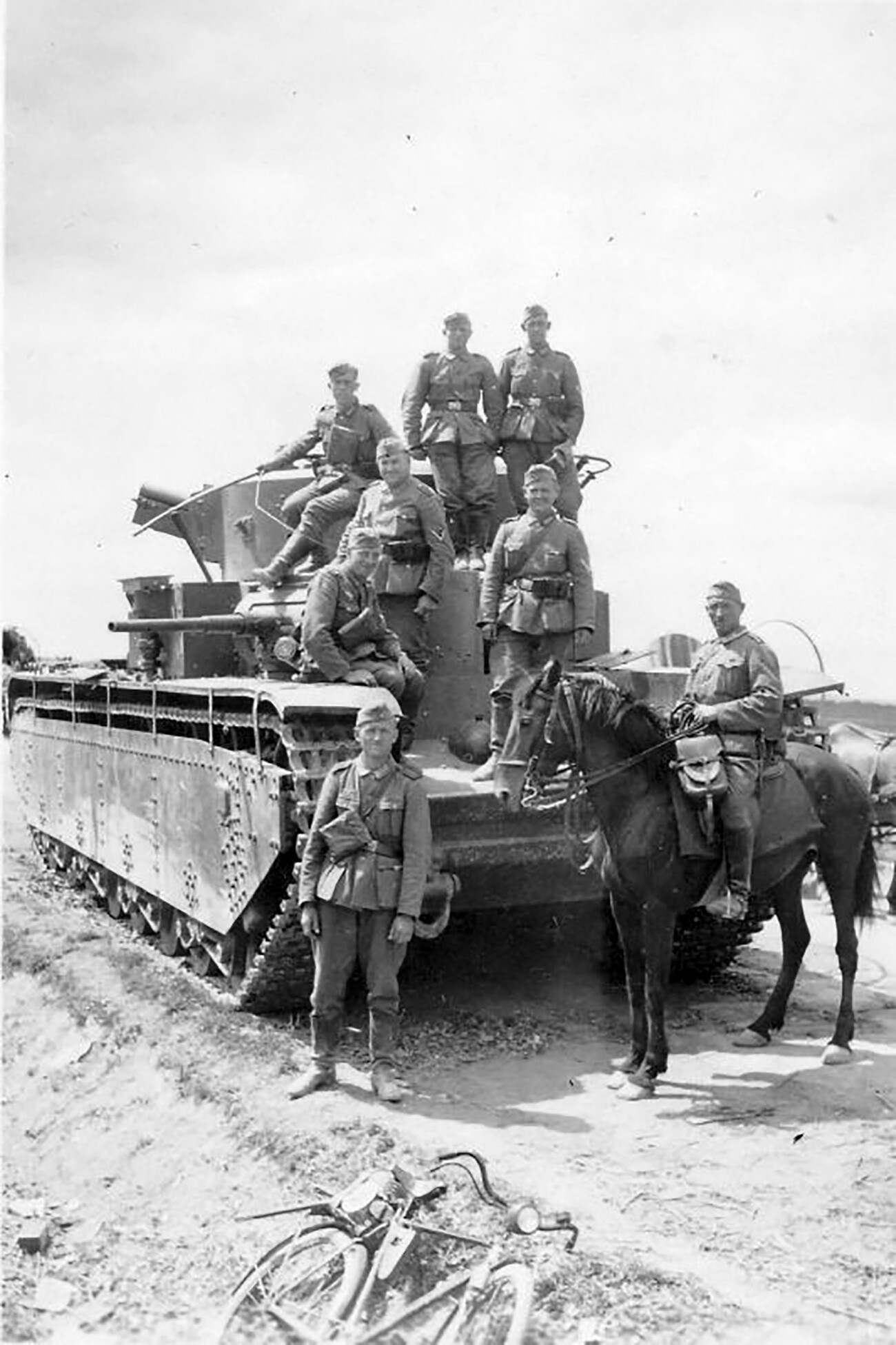
Although the combat path of the T-35 essentially ended in the Summer of 1941, Soviet propaganda did not want to give up such an impressive image. As a result, the five-turret giant flashed on propaganda posters in the subsequent years of the war.
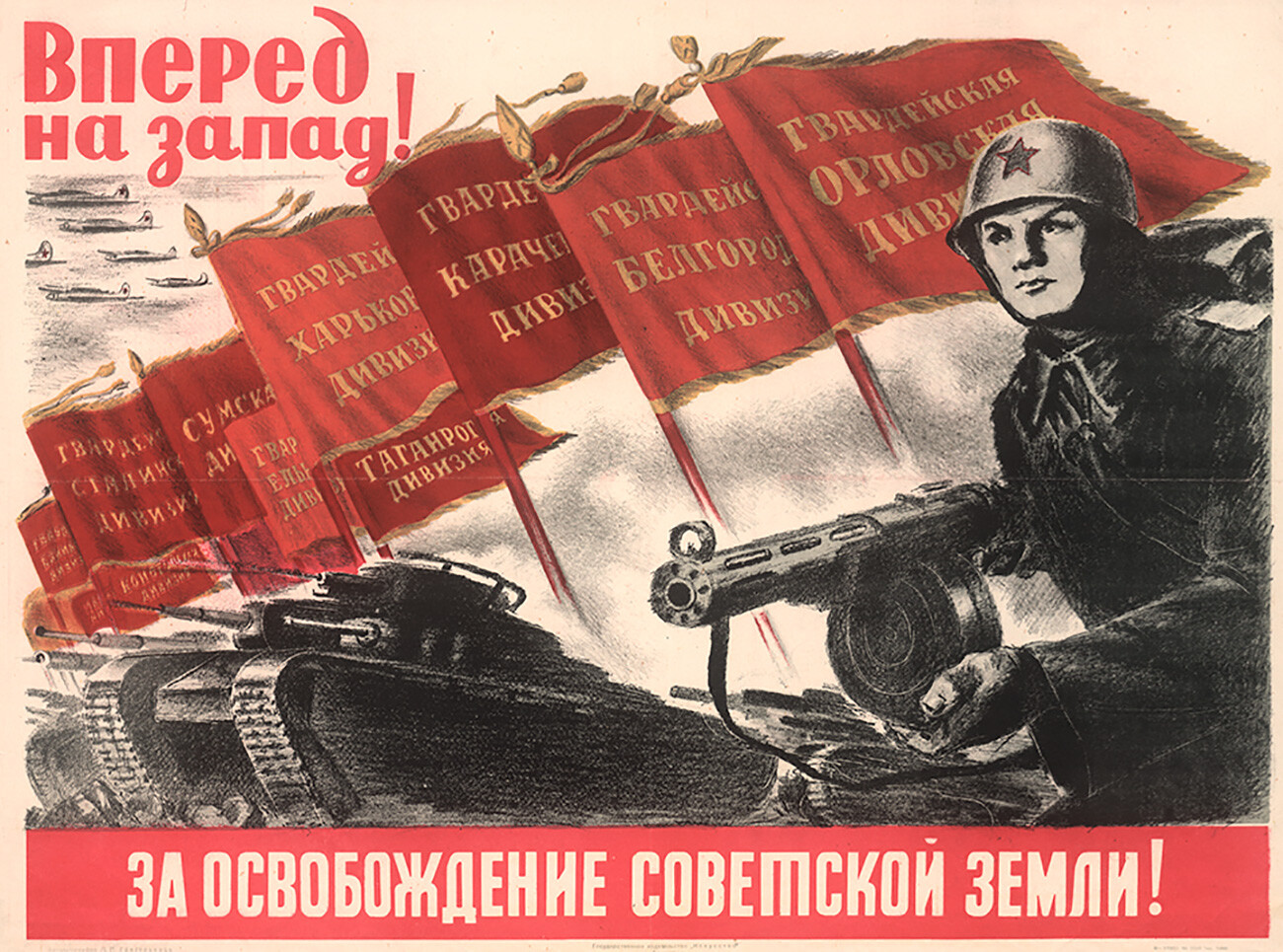
Go west! For the liberation of the Soviet land!
P. GrogoryantsIf using any of Russia Beyond's content, partly or in full, always provide an active hyperlink to the original material.
Subscribe
to our newsletter!
Get the week's best stories straight to your inbox